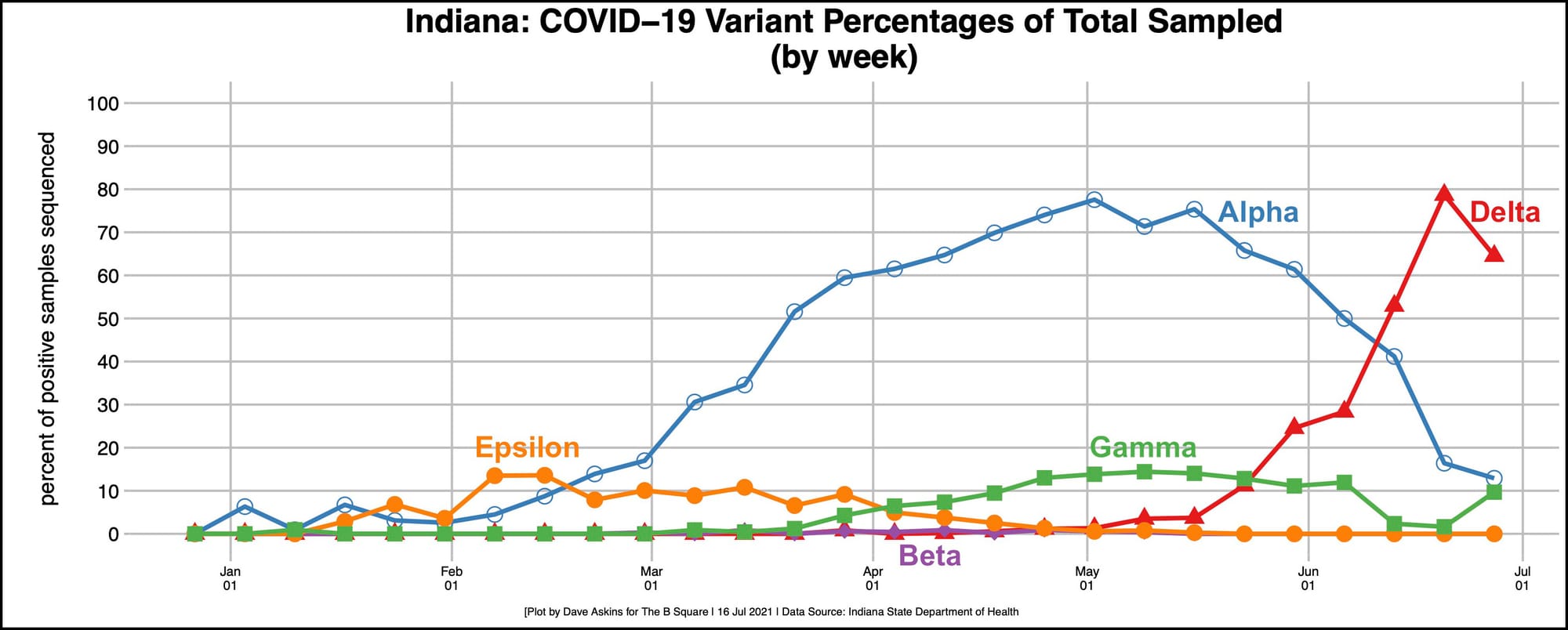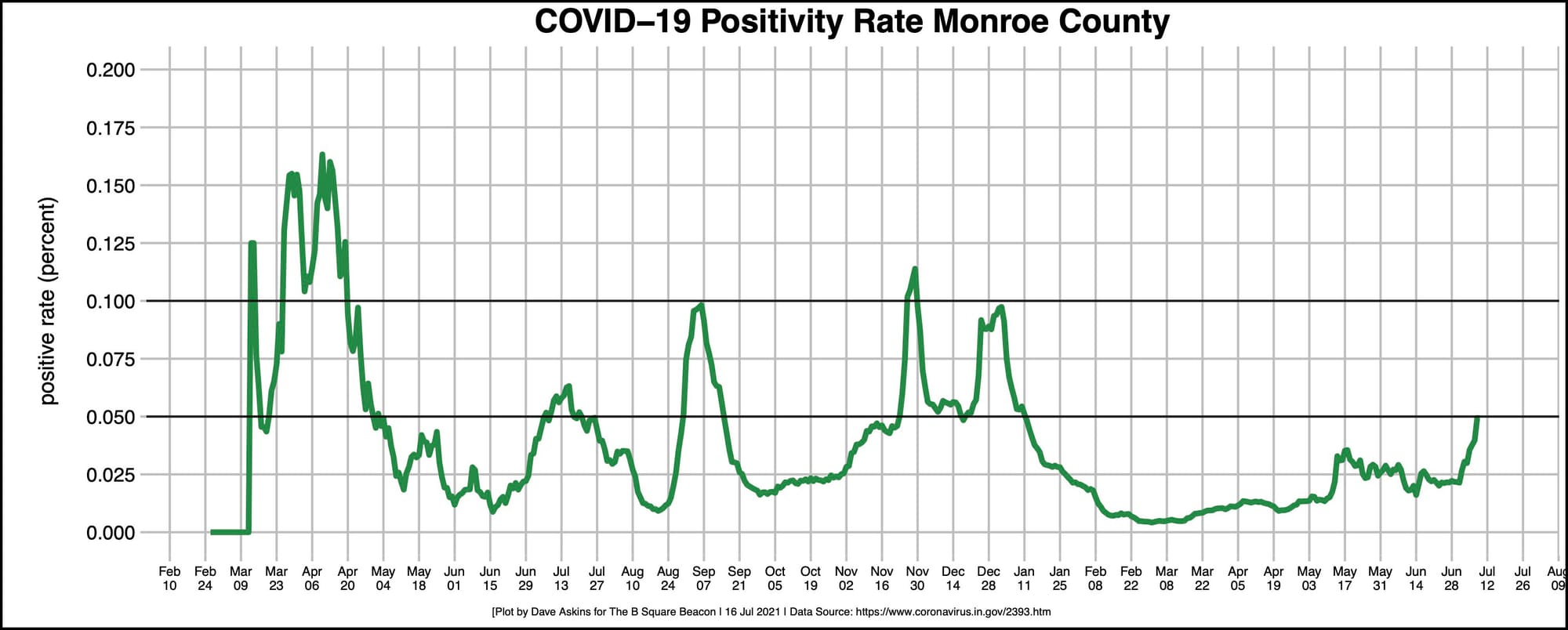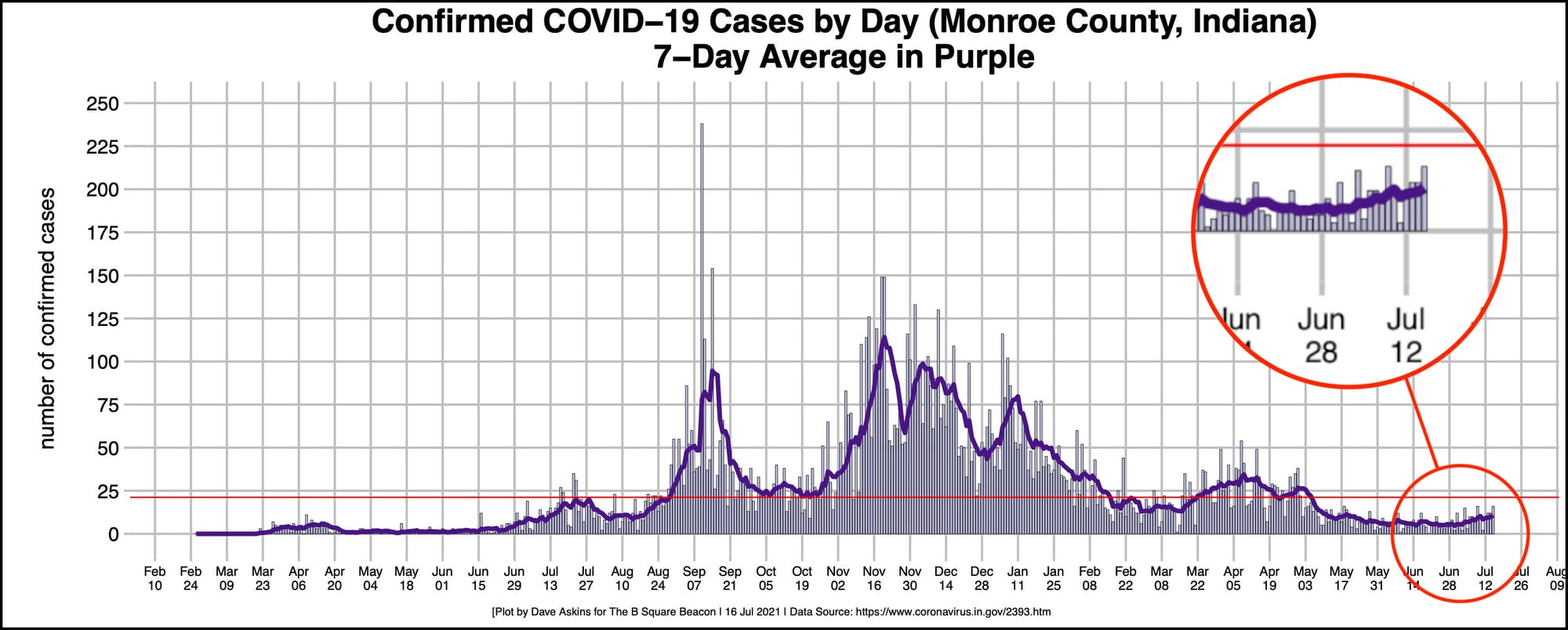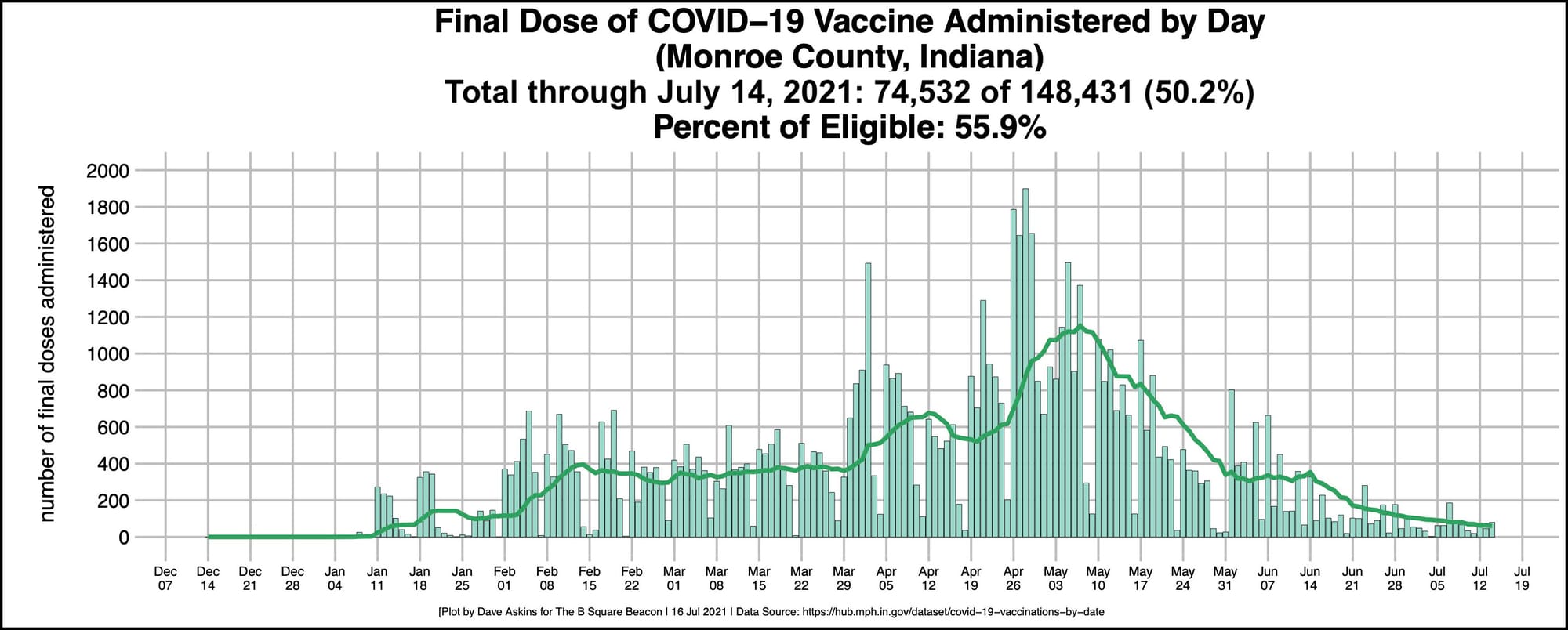Indiana releases numbers over time for COVID-19 variants, revises dashboard presentation to reflect Delta dominance





At a news conference last week, Indiana’s state health commissioner Kris Box sounded the alarm about the increased number of COVID-19 cases in the state due to the Delta variant.
“The Delta variant is now the one that we are seeing most frequently,” Box said.
The Delta variant, one of several mutations that have been discovered, is more easily transmitted than the basic COVID-19 virus.
When Box delivered her remarks, the state’s COVID-19 dashboard still showed the cumulative numbers for variants, ever since the genetic sequencing of positive samples started. That meant the relative proportion of the Delta variant was portrayed by the dashboard as still small—just 3 percent of positive samples.
But in recent weeks, since mid-June, the percentage of positive samples with the Delta variant has vacillated between 50 and 80 percent.
That’s based on the health department’s release to The B Square on Thursday of the daily time series for the numbers of variants, broken down by variant type.
The state’s dashboard data presentation has now been revised to show the percentage of variants in the current month, with an indication of the change over the previous month. As of Friday, the Delta variant was found in 67 percent of positive COVID-19 samples for the current month.
According to the dashboard, for the current month, in about 96 percent of positive COVID-19 cases that were sequenced, one of the variants of concern was found.
Monroe health administrator Penny Caudill confirmed during Friday’s regular news conference of local leaders on pandemic response that the state health department has confirmed the presence of the Delta variant in the county.
Parallel with the upward trend in the percentage of the Delta variant is a downward trend in the frequency of monitoring for variants. The daily time series shows a decrease over the last two months in the number of positive samples that have been sequenced.
In the weeks between mid-March and mid-May, at least 400 positive samples were sequenced every week, with an average of 535 positive samples sequenced.
Since mid-May, those numbers have dropped for some weeks to double digits. For one of those weeks, just one positive sample was sequenced. The average weekly number of positive samples sequenced for the last 8 weeks is just 132.
According to Indiana’s state health department, the approach to genetic sequencing is to perform the tests on a geographically varied subset of positive samples. In addition, according to the health department, samples from people who are newly hospitalized or “are thought to have a second COVID-19 infection or infection after being vaccinated are also tested for variants.”
By time of publication, The B Square did not receive a response from the state health department with comment on reasons for the recent decline in the numbers of positive samples that have been sequenced.
In Monroe County, the trends for COVID-19 infections over the last few weeks have been a source of concern for county health administrator Penny Caudill.
In the last part of June, the 7-day rolling average of positive cases in the county held pretty steady around around 5 cases per day. Starting in July, there’s been a slow but clear upward trend, which has doubled that number. On Friday, the rolling daily average stood at 10.7 cases.
The positivity rate for Monroe County has also shown an increase. In the second half of June, positivity levels vacillated under 2.5 percent. Starting in July, the positive rate in Monroe County started to climb. As of Friday, the positivity rate stands at 5 percent. That’s the threshold used last spring by Monroe County Community Schools to trigger a different set of in-person-versus-virtual instructional options.
Also at Friday’s news conference, Brian Shockney, president of IU Health’s south central region reported an uptick in hospitalizations—both for the region and in Monroe County.




Comments ()